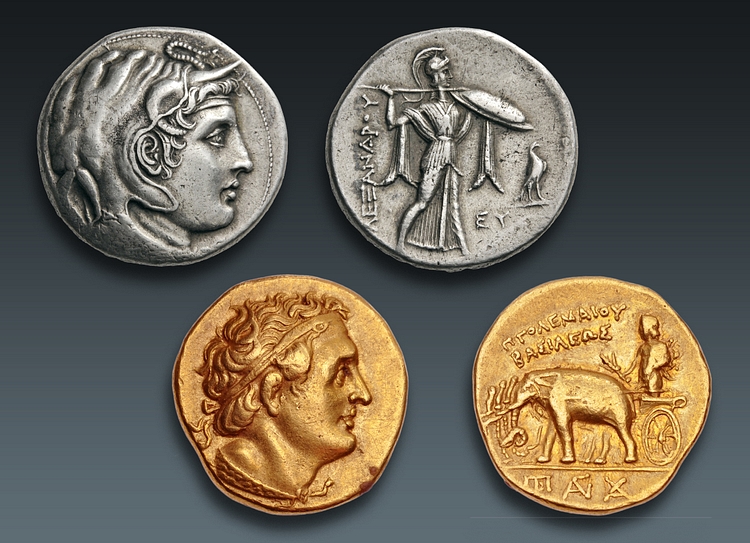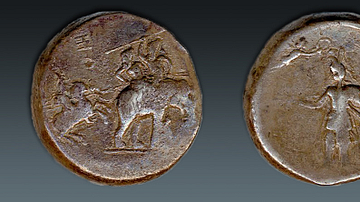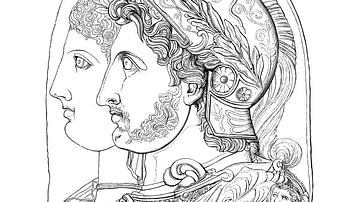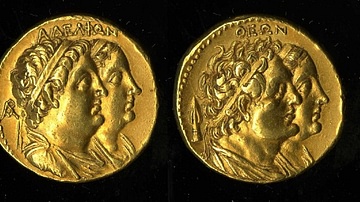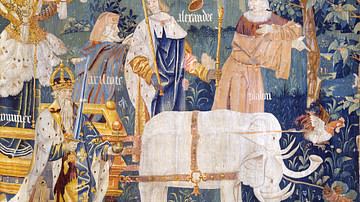Illustration
Two coins issued by Ptolemy I:
1) A portrait of the deified Alexander the Great wearing an elephant scalp on his head, with a ram’s horn over his temple, and an aegis (sacred fleece) over his shoulder; on the reverse Athena Alcidemus, the patroness of Pella
Silver tetradrachm, Alexandria, c. 312/1-305 BCE; Nomos no. 12, lot 120.
2) A portrait of Ptolemy with diadēma (royal headband) and aegis; on the reverse a deified Alexander holding a thunderbolt and scepter standing in a chariot drawn by four elephants
Gold stater, Cyrene or Alexandria, c. 305/4-298 BCE; CNG no. 84, lot 751.
Cite This Work
APA Style
Oppen, B. v. (2019, May 10). Elephant Symbolism on the Coins of Ptolemy I. World History Encyclopedia. Retrieved from https://www.worldhistory.org/image/10578/elephant-symbolism-on-the-coins-of-ptolemy-i/
Chicago Style
Oppen, Branko van. "Elephant Symbolism on the Coins of Ptolemy I." World History Encyclopedia. Last modified May 10, 2019. https://www.worldhistory.org/image/10578/elephant-symbolism-on-the-coins-of-ptolemy-i/.
MLA Style
Oppen, Branko van. "Elephant Symbolism on the Coins of Ptolemy I." World History Encyclopedia. World History Encyclopedia, 10 May 2019. Web. 19 Apr 2024.
